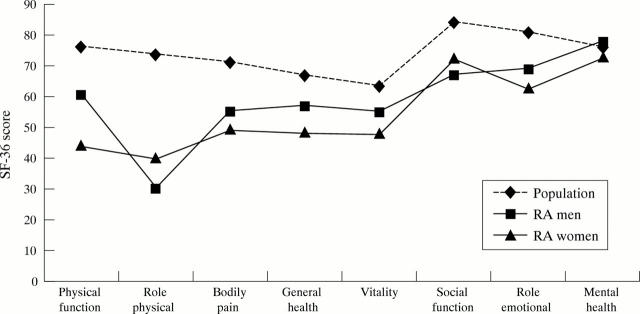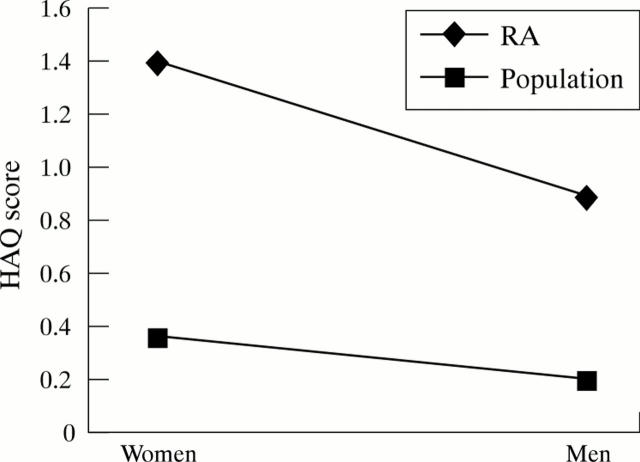Abstract
Methods: A prospective cohort study was carried out on 81 patients with RA who completed four consecutive three month cost diaries. The SF-36, HAQ, and social impact at baseline and one year follow up were also assessed.
Results: Women reported worse SF-36 physical function and HAQ scores than men and received more assistance from family and friends. Women spent more on non-prescription medication and devices to assist them than men. Older patients had higher expenditure on visits to health professionals, whereas younger patients spent more on prescription medication and tests. Pension status and membership of private health insurance schemes were important determinants in these differences in expenditure.
Conclusion: Costs increased with duration of disease, those with private health insurance had greater out of pocket costs (excluding membership fees), and those with pension support had fewer costs. Women were more affected by RA than men in health status, social impact, and out of pocket costs.
Full Text
The Full Text of this article is available as a PDF (102.3 KB).
Figure 1 .
SF-36 scores of patients with RA and the Australian population (aged 55–64). The SF-36 is on a 0–100 scale; a higher score indicates better health.
Figure 2 .
HAQ scores of patients with RA and an age related population (65–74 years); sample from Northern Sydney Area Health Service. HAQ score minimum=0, maximum=3; a higher score indicates greater disability.




